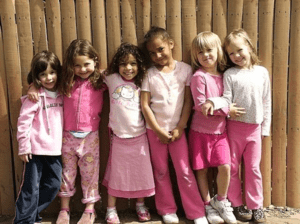What Not To Wear: Where I Learned That People Judge Me For How I Look
The Learning Channel, also known as TLC, has become one of the most popular hubs for reality TV. One such show is What Not To Wear, hosted by Stacy London and Clinton Kelly. In this show, a participant is nominated anonymously, usually by their friends and family. The nominators film the clothing choices of the “fashion disasters” and secretively explore their closets. Stacy and Clinton surprise the participant and ask them, in front of a camera, to join them in a “transformation.” After a brutal and humiliating ceremony in which the participant's entire wardrobe is trashed, a week is spent in New York shopping, plus getting fashion guidance and drastic makeovers.
This was my favorite show in 2009, when I started to experience the first signs of puberty. My mother strongly discouraged me from watching it, which I didn’t understand because I thought Stacy and Clinton were being nice; I mean, fashion rule #1 is “clothes should bring you joy and make you feel beautiful.” It seemed like that’s what they were trying to do. After some reflection, I have more of an understanding of my mother's disgust; I’m now able to articulate why she didn’t want me to watch it.
I’ve realized that the show’s one-dimensional view of identity is objectifying. Segments on the show include “How to Hide Your Tummy,” or “How to Create Curves.” At one point I heard those things and thought they were trying to be helpful. At second glance, these “how tos” project a single image of beauty, an image of beauty that has a big bust and a tight tummy. Watching the show, this narrow view of beauty may be hard to pick up on. The participants are of all colors, shapes and sizes, and the hosts encourage them to be comfortable and to express themselves. Despite the diversity of the people on the show, it becomes clear that no matter the person’s size, shape, or color, Stacy and Clinton’s goal is to get them as close as possible to their singular and idealized vision of what’s beautiful.
The message that this sends to teenagers, and humans in general, is: you should alter your appearance to fit this narrow image of beauty. As an already insecure preteen, I started to wonder whether I met their definition of what’s beautiful, and how I could change to better fit that image.
As a teenager, and a human, I’m trying to find my authentic voice, and I don’t always have the confidence to work a funky hairstyle or try out a new trend. I fear rejection, and worry that my teacher will think my skirt is too short, or that my friends will notice my sneakers are last season’s. Being sensitive to others’ perceptions of me makes me live in slight, but constant fear of judgement. When I get home I let my walls down, and throw on an old T-shirt and baggy pants.
In my home, I’m surrounded by those who love me unconditionally, whether or not my shoes are designer brand. What Not To Wear infiltrates this sacred space of non-judgement, requiring that loved ones attentively observe and critique their friend’s or family member’s clothing.
Family and friends are able to see who I am beyond the clothing I wear and the Crocs that I rock; they know that there’s a lot more to me. How we express ourselves to the world is important, but it doesn’t define our identities. If someone saw me walking down the street in a nice dress and bold jewelry, they might come to some conclusion about who I am–I’m put together, I’m on my way to a nice event, maybe I’m a businesswoman. What they wouldn’t know is that I lift weights, or that I am really ticklish. Stacy and Clinton conflate identity and expression, failing to acknowledge the depth of identity. Their harsh critique pushes participants and viewers to define identity solely through clothing and bodies, when clothing and bodies are only a partial reflection of who we are as people.
For some of the participants, What Not To Wear appears highly transformational in a good way. What Stacy and Clinton are doing is powerful, and can be positive. However, their approach is militant, highly publicized, and fails to acknowledge the complexity of identity. This approach contributes to the false belief that fashion indicates moral superiority, which affects participants, viewers, society at large, and me.
This piece was written as part of JWA’s Rising Voices Fellowship.







